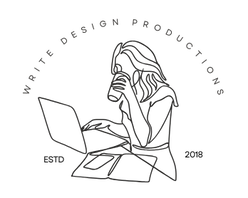What is conversion copywriting?
When someone lands on your website, they’re not reading—they’re scanning.
Their brain is rapidly asking:
Is this relevant to me?
Do I trust this brand?
Is this worth my time?
In the digital world, attention spans are brutally short. On average, you have less than three seconds (See: Shopify research) to connect before visitors leave. That’s when your first line—your opening headline or introductory sentence—has to do its job.
It might look simple, but your first line quietly carries the weight of your entire conversion strategy. Good copywriters practice conversion copywriting to ensure visitors continue browsing your blog articles or products.
What Does a Conversion Copywriter Do?
Let’s start with the basics because this question frequently asks: What does a conversion copywriter do?
A conversion copywriter isn’t just someone who writes nicely worded paragraphs. Their job is strategic. Every word is chosen not just for how it sounds, but for how it makes the reader feel—and more importantly, what it makes them do.
They blend storytelling, psychology, and marketing to guide readers toward an explicit action: clicking a button, signing up for a service, buying a product, or booking a call.
This kind of copy is outcome-oriented. It doesn’t just sit prettily on your website—it moves. It persuades. It performs.
And yes, it starts with that first sentence.
The Power of the First Line
Think about the last time a headline made you pause. It might’ve been bold, clever, or just so relatable it felt like the writer was speaking directly to you. That moment—that flicker of emotional recognition—is what you want to create for your audience.
Because the first line is where trust begins.
It’s the difference between someone scrolling on… or closing the tab.
The job of that first line is simple: keep them with you.
It doesn’t need to be clever. It doesn’t need to be long.
But it does need to connect. Immediately.
What’s the Difference Between SEO Copywriting and Conversion Copywriting?
Another common question: Aren’t all website writers just doing SEO these days?
Not quite.
SEO copywriting and conversion copywriting serve different purposes, though they can be incredibly powerful when used together.
- SEO copywriting is about visibility. It helps your content rank on search engines by strategically placing keywords, crafting search-friendly headlines, and formatting text for crawlability. (Need to learn SEO quickly? Here’s a free SEO guide to help you out!)
- Conversion copywriting, on the other hand, is about what happens after someone lands on your page. It’s the art of turning that visitor into a lead, customer, or client.
To put it plainly:
SEO gets you found.
Conversion copy gets you chosen.
Your first line is where those two meet. It must carry your target keyword (where possible) and land with human resonance. A well-crafted intro serves not just Google but your reader’s heart and head.
Writing for B2B vs B2C? Your First Line Still Matters
Here’s another important nuance: What’s the difference between B2B and B2C copywriting?
While both aim to convert, the tone, structure, and emotional triggers vary:
- B2B copywriting typically emphasises logic, efficiency, and ROI. Your audience might be decision-makers in a company looking for clear solutions to a business problem. Example: “Cut your customer onboarding time in half with our enterprise CRM.” (Check out my examples of B2B copywriting on my portfolio.)
- B2C copywriting is more emotional. It focuses on the personal transformation your product or service brings to an individual’s life. For example, “Wake up with skin that feels as soft as your pillowcase.”
That said, both types of writing rely on the first line to do the same thing: hook attention and build trust.
Whether you’re selling skincare or software, your reader still wants to feel like you “get it”—that you understand their problem and have something valuable to offer.
How to Craft a First Line That Converts
If you’re unsure where to start, don’t worry—you’re not alone. Many business owners, even talented content writers, struggle with the first line because it feels like it has to do everything.
Here are a few headline strategies I often use with clients:
1. Call out a relatable pain point
“Sick of writing blogs that never get clicks?”
2. Make a bold promise
“Finally—copywriting that actually converts.”
3. Ask a curiosity-piquing question
“What if your homepage could sell for you while you sleep?”
4. Share a surprising truth
“Most website visitors leave within 15 seconds—here’s how to change that.”
Your first line doesn’t have to win a literary prize. It just has to be relevant, specific, and emotionally resonant enough to spark curiosity and trust.
Final Thoughts: It’s More Than Just a Line
You might think, “It’s just a few words at the top of the page—how big of a deal can it be?”
But here’s the truth:
Those few words decide everything that comes next.
They influence how someone perceives your brand.
They shape the first impression.
They determine whether your visitor becomes a customer or clicks to a competitor.
If your website isn’t converting the way you hoped, don’t overlook the power of your intro. Often, the fix isn’t a total rewrite—it’s a sharper, smarter start.
It’s also the reason why copywriters get ‘writer’s block’. It takes time, but it’s worth the effort.
Need help rewriting your homepage intro?
I specialise in crafting conversion-focused website copy that sounds good and sells.
✨ View my copywriting services and let’s give your first line the strategy it deserves.
Let me know if you’d like a matching Instagram post or TikTok script based on this!

